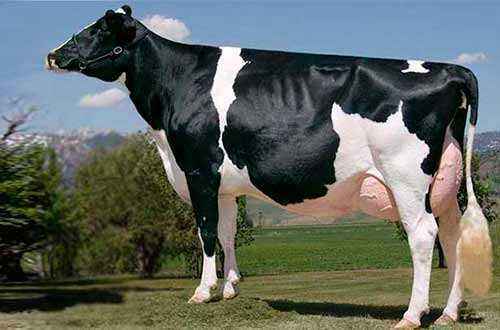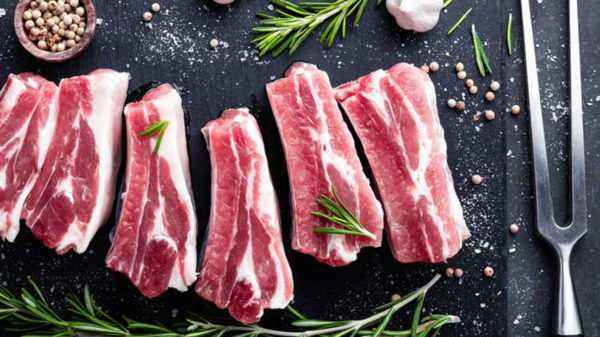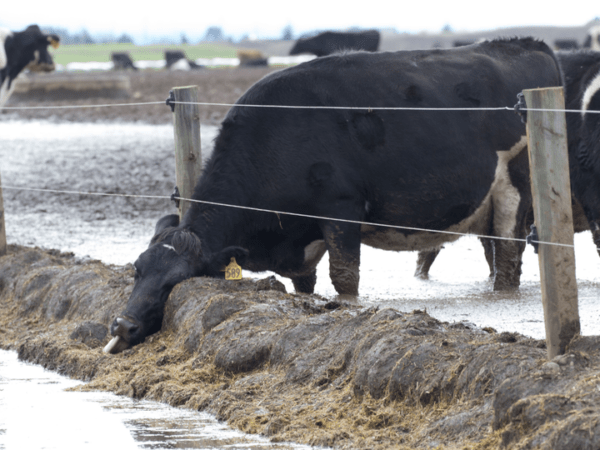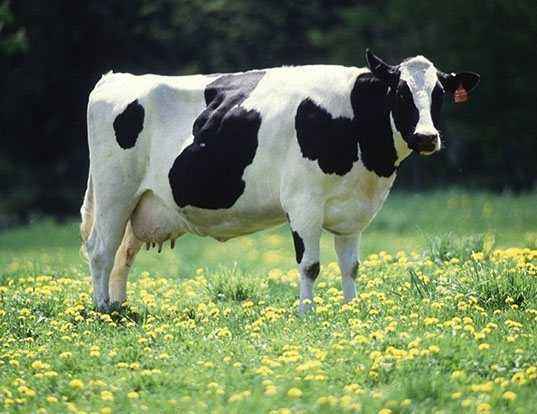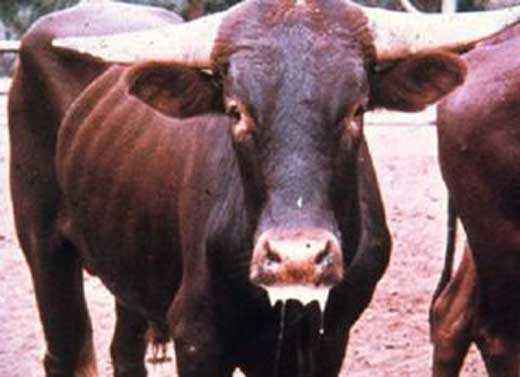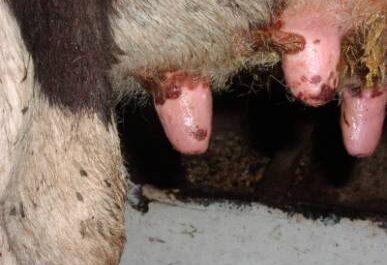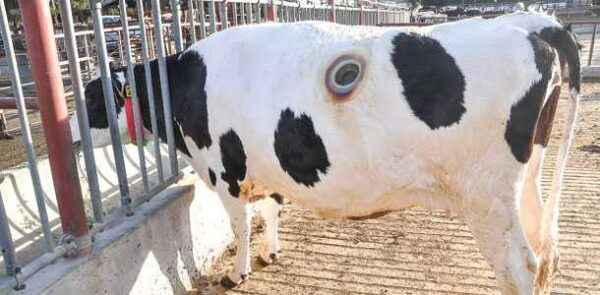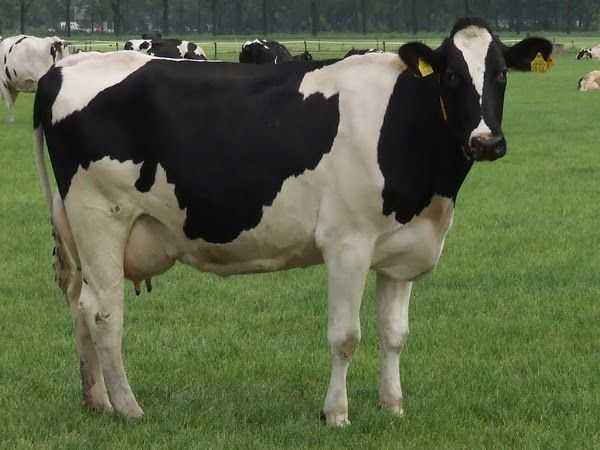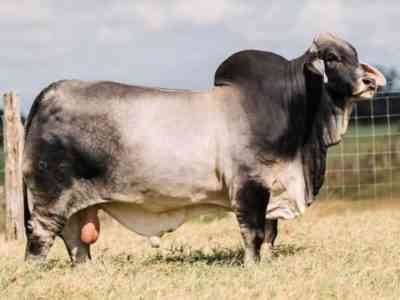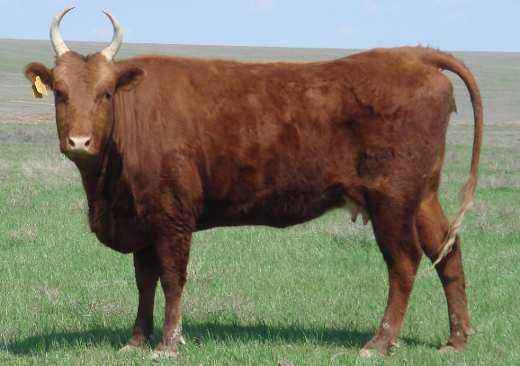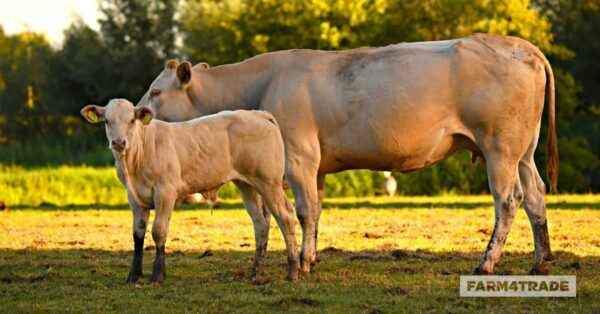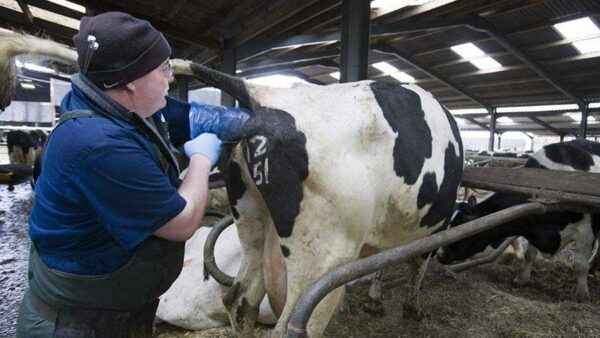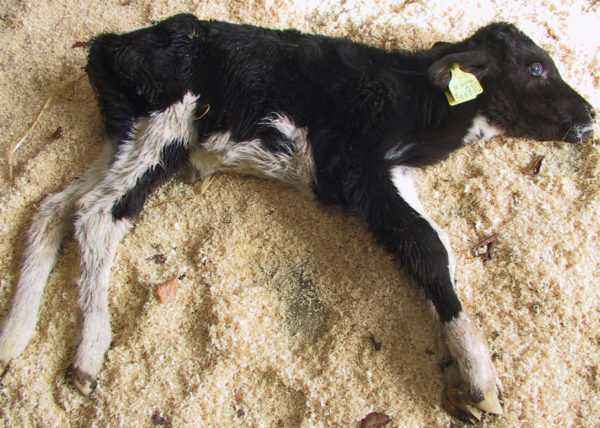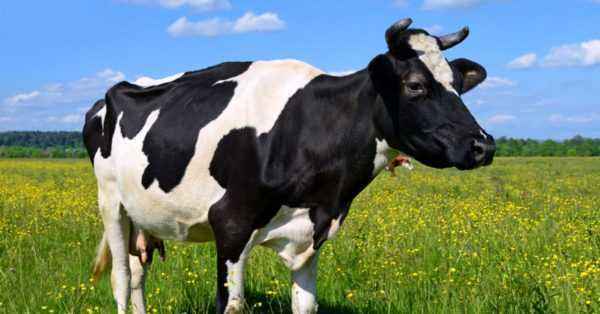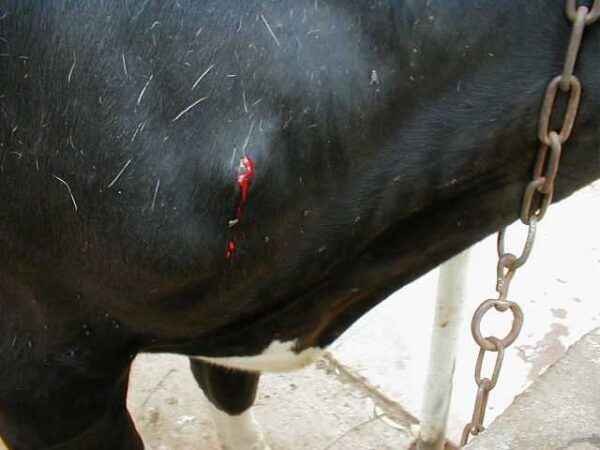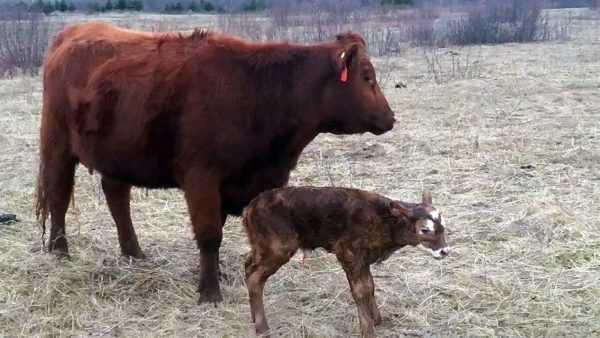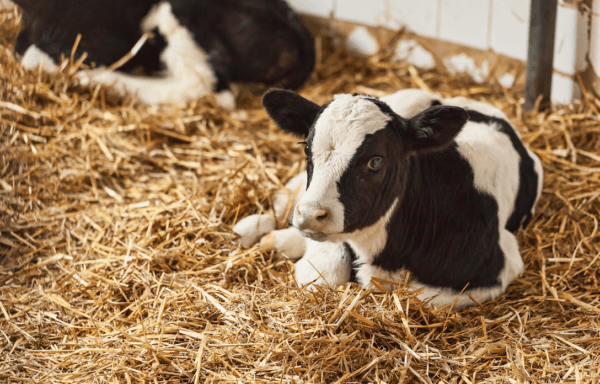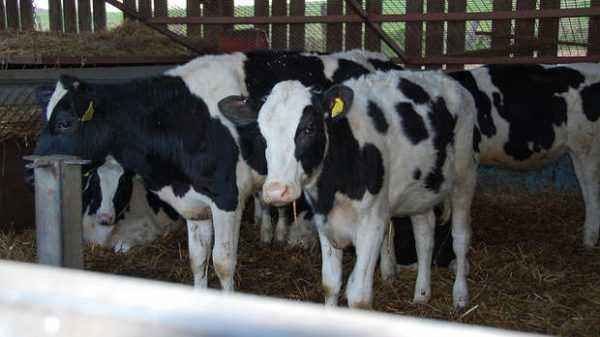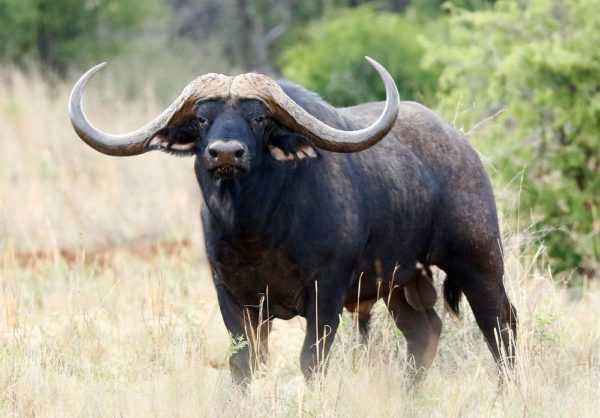A musk ox is a large, dense-coated animal that lives in the northern regions of America and Eurasia. Represents the genus of musk oxen and the family of bovids. For a long time there was debate about its taxonomic affiliation. Previously, the animal was attributed to the bull subfamily, now scientists define it in the goat subfamily. But calves are still called calves, not lambs.
- Description of the musk ox
- Appearance of musk oxen
- Characteristics of the coat
- Habitat and habitat
- Natural enemies
- Lifestyle
- Food <
- Gon and mating
- Pregnancy and birth of calves
Musk oxen are listed in The Red Book, although in some places their population has grown so much that there is a question of excluding a species from the list of endangered species.
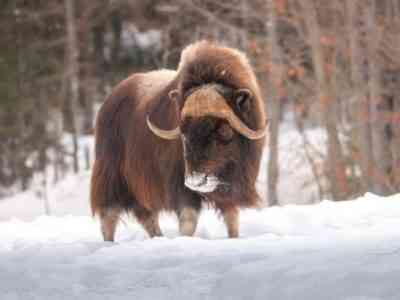
Musk ox
Description of musk oxen
Muscovite ancestors used to live in Central Asia, mainly in the Himalayas. About 3.5 million years ago the climatic conditions on Earth changed, it became colder, musk oxen moved closer to Siberia, settled throughout the north of Eurasia zone, crossed the Bering Isthmus and ended up in America. When the climate became warmer, the numbers of these animals declined sharply. Almost all animals of those times close to musk bulls became extinct, only reindeer remained.
A musk ox is not a hybrid of a sheep and a cow, as many may misunderstand from the name. Just in appearance, he simultaneously looks like two of these animals. Scientists have long doubted which subfamily to attribute this strange individual to.In the west, the species is often called a musk bull, but this name is also not related to the specific secretion of the glands of some animals. It comes from the name of the swamp “musked” in the dialect of the Cree Indians.
Appearance of musk oxen
The appearance of musk oxen is shaped by their habitat. They are covered with wool, because of which they seem larger than in reality. The animal’s head is decorated with horns, both in males and in females, this helps them protect themselves from enemies.
Here is a brief description of the appearance of the musk ox:
- Height – 135-138 cm , for the female – 120 cm.
- Weight – 260-350 kg (for the female – up to 300 kg), in captivity can exceed 650 kg.
- The body of the male – 210- 260 cm, for a female – 190-240 cm.
- The head is massive, elongated in length.
- The horns are twisted, increase in size up to 6 years, bend first down, then forward , at the last stage – to the sides. Females have less horns, there is a gap between them on the head. Males have solid and longer horns.
- The ears are quite small, about 3 cm in calves, and 6 cm in adults.
- A hump is formed in the shoulder region and on the scruff.
- The back of the body is noticeably narrower than the front.
- The legs are low, stocky, they are longer in the back than in the front.
- The hooves are rounded and large, well suited for walking in the snow, climbing on the rocks. The front hooves are wider than the rear ones, since with their help the musk ox obtains food under a dense cover of snow.
- The tail is shortened, at the calf – 6-6.5 cm, at the adult musky bull – 12.2-14.5 cm.
- The udder of the females is not very large, covered with light hair, the length of the nipple is 3.5-4.5 cm.
The size of the muskox is very dependent on the habitat, the availability of a sufficient amount of feed. For example, larger individuals live in the west of Greenland than in the east. The same can be said about the animals living in captivity and at large.
Characteristics of the coat
Thanks to the thick coat, the musk ox is able to survive even Arctic frosts. His coat warms 8 times better than sheep. The color of the coat is from brown-brown at the top to black below. The hair is long, often reaches the ground. Here is a description of the structure of the coat:
- Guiding hairs
- Ostovye hair three orders of length about 60 cm
- Intermediate hair two orders
- Thick downy hair of two orders make up the undercoat or giviot (it is much thinner and warmer than cashmere)
The musk ox is completely covered with wool, which is very important for the harsh Arctic. Only horns, lips and hooves remain free. Shedding begins in May or June. Bulls lose their undercoat, which begins to grow back in August. In old animals and pregnant females, molting may be delayed. The musk ox changes the remaining hair gradually throughout the year.
Habitat and habitat
Where do musk ox live?The natural population is found in Canada and Greenland. In Alaska, these animals were completely exterminated in the 19th century, but now individuals from neighboring regions have been brought there, and their numbers are resuming. In the 70s of the last century, the musk ox was successfully acclimatized in Taimyr and Wrangel Island. Now the population has reached such a level that there is an opportunity to resettle animals in other regions. Musk bulls are primarily resettled from Wrangel Island.
Musk oxen appeared in Russia and other regions, not only in Taimyr. They are in the Magadan region, in Yakutia, in the Urals, they were brought to the island of Yamal. The musk ox from North America is now actively settled in Sweden and Norway. The population is constantly growing, and there is a hope that ancient animals will be excluded from the Red Book.
Musk oxen live in the northern Arctic zone both on the plains and in mountainous terrain. The area on which the musk ox lives should have 200 km². In this area, since the end of spring, herds have been actively wandering in search of food and dry pastures, which are not so many in the cold regions of the Arctic.
Migrating herds move along the tundra rather slowly, but in in case of danger, they can reach speeds of up to 40-50 km / h. This movement lasts until the first half of autumn. In winter, bulls live in a smaller area of about 50 km². The musk ox does not leave his habitat in winter, as reindeer do.On the contrary, migration decreases in the cold.
Natural enemies
These large animals have natural enemies. They are hunted by wolverines, polar bears, wolves. Most often, predators hunt for herds with small calves, track down old, sick and weakened animals. Beasts are especially active at the end of winter, when the herds are starving, almost losing all their fat, even the young dominant male musk ox feels weak at that time.
The musk ox is perfectly able to defend itself if it is in the herd. Adult individuals become in a circle, inside it are females with cubs. Exposing horns, animals will not allow a single predator. A pack of wolves can sometimes break through a defense. But even if a polar bear or a wolf steals a cub, an adult musk bull will desperately protect him.
The musk ox used protection tactics from predators against the person. Unfortunately, in this case, she played a cruel joke with them. Hunters simply shot herds with a gun, almost the entire population was destroyed. They killed animal musk ox for meat, for the sake of valuable fur and even just for the original trophy. Today, where this species lives, hunting is prohibited. Many musk bulls live in the reserve.
Lifestyle
Musk oxen in summer live in small groups of 7-10 animals. In winter, groups gather in larger herds, which can number up to 50 individuals. In one group there are several females and 2-3 males.The leader can be one male, the rest are in a subordinate position. This group cannot be called typical for herbivores. First, the females come together, then a male appears near them. Other bulls can engage in battle with the male in the herd and take possession of the females in case of victory.
In addition to groups with animals of different sexes, there are exclusively male herds. Older bulls prefer to live alone. In winter, several groups come together. During this period, the territory of their migration decreases sharply. Musk ox sleep most of the time to save strength. Blizzards survive in a tight group.
Food
A musky bull eats almost everything, sparse tundra vegetation and a short summer leave him no choice. In the warm season, the bull eats grassy plants, which at this time are actively developing. Over the course of several weeks, the bulls gain weight, build up subcutaneous fat in order to survive the long, cold winter. During this period, the bull eats 6–9 times a day, rests between meals.
Toward the autumn, the musk ox switches to shrubs, small Karelian birches, moss and lichen. When snow falls, animals gouge dead wood and reindeer moss from under it. They are able to tear a layer of snow cover about 40 cm thick. If the ground is covered with ice or more snow falls, the herd may starve.After a harsh winter, musk oxen go looking for oil shale, as they need to replenish their mineral reserves.
Gon and mating
Females mature to mate and give birth to calves in their second year of life, at about 11-17 months. Males a little later, at 2-3 years of life.
The rut in musk bulls starts in July-September. Timing may vary depending on where the animals live. For example, in the east of Greenland, this happens in the last days of August, and in Norway in July.Sometimes in the middle of spring you can observe a false rush, when the males arrange a brawl among themselves. In fact, at this time it was not about females, but about the territory for grazing and about domination in the herd.
Gon is divided into three different periods:
- Start. In female musk oxen, estrus begins, they allow themselves to sniff, do not show aggression to males. The dominant male changes his behavior, eats little and does not sleep much, shows aggression to younger bull-calves.
- High. The main male creates temporary pairs with either one or the other female. Each pair lasts 1-2 days, mates many times.
- Attenuation. Females stop letting the male in, they have an appetite, aggression to other bulls decreases.
Fights between bulls during the rutting season are not too aggressive. They knock hooves, threaten horns, compete, who will shout whom. After a short time, the weaker runs away. Extremely rarely, bulls collide with their foreheads. In one battle, such collisions can be up to 40 pieces. The death of one of the participants in the fight can occur only in an exceptional case.
Pregnancy and birth of calves
A muskox is born in 8-8.5 months old calves. The fluffy fur and the cylindrical structure of the body of animals does not allow us to notice this state in females upon outside observation. Only very experienced zoologists can figure out pregnant females.Most calves are born in late April, when it is already quite warm, a polar day begins, but the herd has not yet migrated. If the female does not have time to calve, she will have to give birth on the way.
When the time comes for delivery, the female musk ox is a little separated from the herd. Fights last 5-20 minutes. Immediately after birth, the calf rises to its feet, and after a couple of minutes it sticks to milk. The calves weigh 8-10 kg; they have a thick layer of fat that protects them from frost. Females in the wild give birth to one calf. Twins are extremely rare, most of these calves do not survive, often their mothers die with them. The chance to leave such calves is only in the reserve or zoo.
Already from the second week, the baby musk ox gradually eats grass, from a month it makes up a significant part of their diet. The baby eats breast milk for up to 5 months. Females often go into maternal herds for more effective protection of calves. In such a group there can be 7-10 adults and as many calves. From the first days, young animals begin to play among themselves, learn social contacts in the group. The mother recognizes her baby by smell, it focuses on the voice and appearance.
The life span of a musk ox is 10-15 years. Females up to 10 years old with good feeding give birth to calves annually. After this age, a year later. If there is little feed, the musk ox gives birth to one calf every 2 years.If muscular bulls are only threatened by natural enemies, not humans, their numbers are growing rapidly. One female can give birth to 8-10 cubs per life. That is why acclimatization has been so successful in many countries. The endangered polar musk ox species got a second chance at life.
